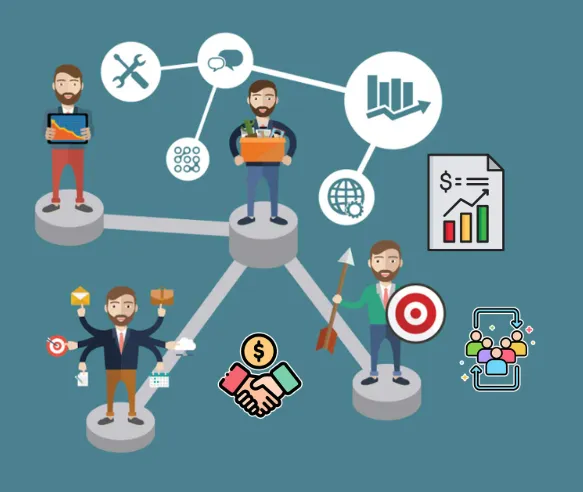Imagine a sales team that knows which opportunities are most likely to close, sends personalized outreach automatically, and frees up reps to focus on real conversations instead of repetitive tasks. That’s not a future dream—it’s already happening, and by 2025 the top-performing sales organizations are defined by one thing: AI-driven sales stacks.
A modern sales stack goes far beyond a basic CRM. It’s an integrated ecosystem of tools designed to automate tasks, provide predictive insights, and deliver personalized engagement at scale. When built correctly, this system doesn’t just manage information—it actively guides strategy and drives outcomes.
Why Every Sales Team Needs an AI Stack
1. Automation that saves time
Routine tasks like scheduling, data entry, and follow-ups no longer need to consume hours of a rep’s day. AI handles the busywork so teams can focus on closing deals.
2. Data-driven decision-making
Predictive scoring and conversation analytics replace guesswork with facts, helping teams prioritize leads and monitor deal health in real time.
3. Personalization at scale
AI tailors messaging to each individual prospect—even when engaging thousands at once—making outreach more relevant and effective.
Seven Core Tools for a Winning Sales Stack
1. Outreach and Engagement Platforms
The hub for emails, calls, social messages, and follow-ups. These platforms automate outreach across channels, ensure consistent follow-ups, and track engagement in one place.
Best for: Teams that want to manage multichannel outreach with strong deliverability and time savings.
2. AI-Enhanced CRM Systems
A CRM should be more than a database. With AI, it becomes an advisor—scoring leads, predicting outcomes, and capturing activity automatically.
Best for: Organizations that need deep insights and enterprise-level scalability.
3. Prospecting and Data Enrichment Tools
Finding the right contacts and keeping records up-to-date is critical. These platforms provide verified leads, enrich CRM data, and integrate directly with sales workflows.
Best for: Sales teams that rely heavily on outbound prospecting and accuracy in contact data.
4. Revenue and Conversation Intelligence
Call recording and analysis tools go beyond note-taking. They highlight buying signals, reveal risks, and provide coaching insights for managers and reps alike.
Best for: Teams focused on improving deal visibility, forecasting accuracy, and rep performance.
5. AI-Powered Email Coaches
Instead of guessing whether an email will land, these tools grade drafts instantly, suggest improvements, and even generate full templates.
Best for: Reps who depend on email outreach and want higher reply rates with less effort.
6. Smart Scheduling and Workflow Automation
AI ensures calendars, reminders, and tasks align seamlessly, reducing friction between sales activities and client availability.
Best for: Teams needing efficiency in day-to-day coordination.
7. Integration and Analytics Layers
The glue that makes it all work. Smooth integrations allow data to flow between platforms, while analytics provide a unified view of performance.
Best for: Companies aiming to maximize ROI by creating one connected ecosystem instead of fragmented tools.
How to Make It All Work Together
- Start with clean data. A CRM full of outdated records will derail everything.
- Choose tools that integrate natively. Your outreach, enrichment, and CRM should work seamlessly without manual syncing.
- Invest in adoption. The best technology is useless if the team doesn’t embrace it. Training, onboarding, and internal champions ensure lasting impact.
What’s Next for AI in Sales
The evolution isn’t slowing down. Expect to see autonomous AI agents that prospect and qualify leads independently, personalized video outreach at scale, and unified platforms that merge engagement, CRM, and intelligence into a single solution.
Sales success in 2025 isn’t about working longer hours—it’s about building smarter systems. With an AI-powered stack, teams can streamline operations, close deals faster, and deliver personalization that would have been impossible just a few years ago. The future belongs to sales organizations that adopt these tools early and learn to use them strategically.







